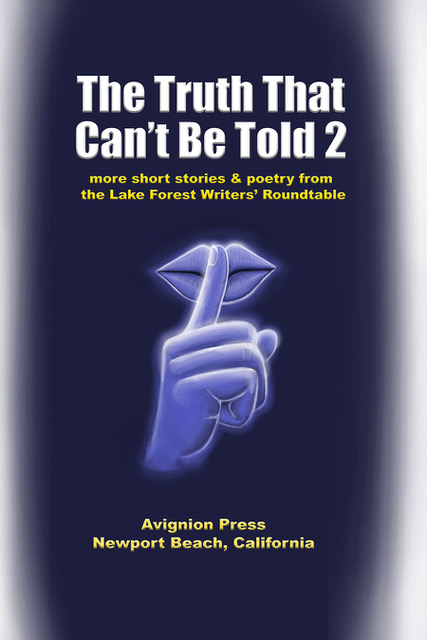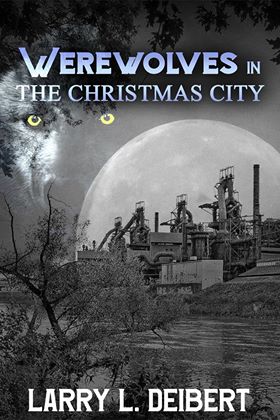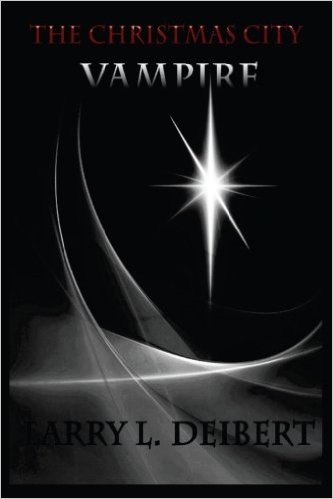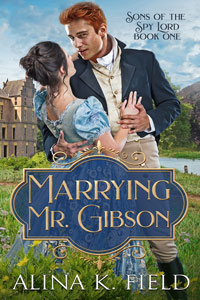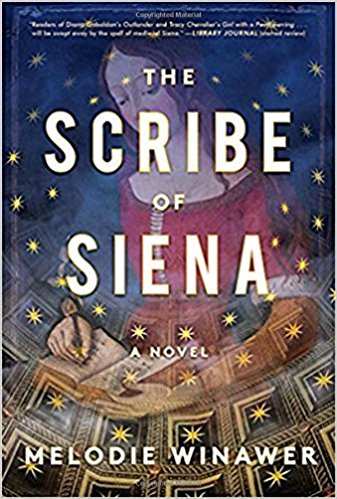e-maginings: Internet Filter Bubbles & MBI’s
May 17, 2011 by A Slice of Orange in category Archives tagged as e-maginings, internet filters, Linda McLaughlin, mammography, TEDI haven’t posted here in a while, but yesterday I happened to discover two very interesting TED conference videos.
The first is Eli Paliser on “internet filter bubbles”, an unintended consequence of the personalization of the web. It should be of interest to all of us who use the web for research.
http://www.ted.com/talks/eli_pariser_beware_online_filter_bubbles.html
And Dr. Deborah Rhodes talk on mammography is of importance to all women, regardless of age:
http://www.ted.com/talks/deborah_rhodes.html
What have you discovered lately?
Linda Mac
blog: http://flightsafancy.blogspot.com/
Oh Heck! Where Have all the Booksellers Gone?
May 15, 2011 by A Slice of Orange in category Archives tagged as audio books, book seller, book stores, retail
I just read a book improbably titled The Guernsey Literary and Potato Peel Pie Society. I say improbable because my editors always advised that less is more when it comes to titles. Readers, after all, only give you seconds to catch their interest. It took me longer than that to sound out all the syllables in the aforementioned book. But all the seconds in the world would not have convinced me to read this except that it was recommended by an extraordinary person: a bookseller.
Which brings me to the lament the day and it goes like this: I miss real, true, dedicated booksellers like Mr. Bruce Raterink, Barnes & Noble, Virginia. He knows exactly what I like to read and what I write (contemporary thrillers and mystery, true crime) but he also instinctively knows how to broaden my reading horizons. Considering I live in Los Angeles and he lives on the east coast his talent goes beyond gift to pure wizardry.
The Guernsey Literary and Potato Peel Pie Society, written with great verve, exquisite sensitivity and deceptive gentility, is set in a time of great sorrow, distress and courage – Europe’s recovery after World War II. Juliette, the heroine, is a writer and the cast of characters are all readers (of sorts). A bookseller is early engaged to attempt to find a book in the ruin that is England. The intersection of my normal read and this book pivoted on excellent characterization and astounding pacing.
But it was Juliette’s praise of booksellers – selfless people willing to endure long hours and no pay simply for the love of books and their readers – that gave me pause. Booksellers have played an intimate role in my professional and personal growth and I fear I have met the last of them.
Over twenty years ago Michelle Thorne enticed me to do book signing at her independent store. Unlike my first cool and corporate experience, signing at Bearly Used (and new) Books was like a riotous party at the Mad Hatter’s table – always joyous. My books were piled in an optimistic pyramid as if Michelle knew they would sell by the bushel. There were cookies, praise, decorations, readings. Michelle was a social director, best friend, stern mom and cheerleader wrapped into one. She made me confident about writing when I was anything but.
Robin Elder was a beautiful red-haired woman who moved gracefully through her store lined with English mysteries, intrigues and thrillers and a select few American authors. I was thrilled to find my books on the shelves of her bookstore/tearoom. Having just moved, finding Robin made me feel as if I was home. But what I remember most is that she embraced my youngest, my curious little boy who preferred books to soccer in a new neighborhood that didn’t have much use for the athletically challenged. For over a year, before she was forced to shut her doors, she discussed books with him and allowed him to read as long as he wished, settled on a small window seat, kept company by her cat. He is now a playwright. His ability to write may be somewhat genetic, but his love of a good story was nurtured within the walls of a small store stuffed with unique books and overseen by a perpetually thoughtful bookseller to whom words meant the world.
Corki Brucellas, the energetic corporate angel who launched my last five books at my local Borders was a literary earth mother who believed each novel was a special delivery. She could discuss individual author’s strengths and weaknesses. Knowing how fragile a writer’s ego could be, she never voiced the later. Now my local Borders is closed. Corki will always be a friend but it is sad she will not be a bookseller any longer.
Of all the booksellers who have helped me, nurtured me, celebrated with me, it is only Bruce who continues to ply the trade. The others have moved on to other things, their small stores unable to turn a profit for their wonderful owners, the corporate stores failing to recognize how vital the roll of a true bookseller – not a clerk – is. And, yes, in this age of internet, IM and Twitter, good reads are recommended by people I’ve never met, my books are reviewed and criticized but there are few left who will look a reader in the eye, pluck my book from a shelf, press it into someone’s hand and say “I have read this; you will love itâ€.
In my own backyard there is no one left who will call me by name when I walk into their store, I will no longer sign my name on the flyleaf of my book, I will not sit beside a pyramid-stack of real paper in anticipation of meeting people and being cheered on by the bookseller.
Oh heck, I miss them. They will never be back because a good bookseller is inefficient and unprofitable. A good bookseller takes too much time to read, to understand, to seek, to find, to chat, to listen to author and reader alike. I am happy that at least one of them is still standing. He makes me lists of books to read and bucks me up when the writing is slow. He picks out passages of my work that he believes are particularly inspired which makes me work all the harder. Because he is there, I write and I read and I am better at both. Lucky me to know him and others like him and lucky Virginians to still have Bruce to press a book in their hands and say “I loved this, so will youâ€.
3 0 Read moreContest Judge Tells All
May 14, 2011 by Marianne H. Donley in category Archives tagged as Charlotte Carter, Contests, Love Inspiredby Charlotte Carter
Throughout the year, I judge quite a few entries in unpublished writing contests. I’m thrilled when I find a really well written entry. I’ve been known – at least once – to give a perfect score. I’ve even referred one entrant to my agent.
But I dread finding mistakes that drive the score down. Hoping to help others learn what NOT to do, here are a few examples.
One author wrote wonderful, creative, original metaphors. They were great! Except there were too many, sometimes three on a page. I got a bad case of metaphor-itis and had to lower the score.
Actions cannot happen simultaneously. Try to picture what this character is doing: She stood and carried the baby as she followed the doctor down the hall. You cannot stand and carry and follow all at once. These actions should be in sequence. Standing, she lifted the baby into her arms and followed the doctor.
One author had clearly been told to use the 5 senses. Excellent idea. But not all in one paragraph and then totally forgotten throughout the rest of the manuscript. Weave the 5 senses into every scene so the reader shares the same experiences as the characters.
Dialogue is good. Dialogue by itself is not enough to tell an emotional story. It’s talking heads.
Read your entry carefully, slowly, aloud, or have someone else do it for you. Silly mistakes and typos can cost you points.
Commas are your friends. Or rather, properly used commas make your sentences understandable. Leave them out and the reader, or judge, has to continually backtrack. Commas used willy-nilly are just as confusing. Don’t guess. Get someone to help you.
You do not fool a judge by not starting a new page for a new chapter. We know you’re trying to squeeze every word into the limited number of pages that you are allowed. It doesn’t help.
Your synopsis, no matter how short, has to include the ending. Don’t make the judge — or an editor — guess how the story is going to come out.
Books that leave you smiling
from Love Inspired
Big Sky Reunion, available now
Big Sky Family, 11/2011
http://www.charlottecarter.com/
STAR GAZING AT SARDI’S
May 13, 2011 by Marianne H. Donley in category Archivesby Bobbie Cimo
For a brief period of my youth I lived on Long Island, New York. It was quaint, quiet and pretty dull, even for a girl raised in Birmingham, Alabama. Also, a far cry from the bright lights, glamour and excitement of the big city. But once in a while, on a Saturday, my sister would take me on an outing to Manhattan, where we would do a little shopping, catch a Broadway matinee, have an early dinner and then go star gazing outside of Sardi’s Restaurant.
Sardi’s, located in New York City’s theatrical district, was the pre-and-post theater
hang-out for all the Broadway stars. This toast of Broadway, as it was sometimes referred to, was also known for the hundreds of celebrity caricatures that adorned it’s walls–much like the West Coast’s Brown Derby.
It was just by chance, while wandering in front of Sardi’s, that we became junior stalkers–we didn’t mean to, we just kind of fell in with the wrong crowd–literally. Well, actually, it turned out to be the right crowd, as far as we were concerned.
It all happened very innocently when we found ourselves being blocked by a small group of people, gathered in front of the famed restaurant. We couldn’t figure out what they were all doing there, when suddenly the crowd grew excited and a flurry of flashing lights went off. It didn’t take us long to realize the hullabaloo wasn’t for us, but for some famous personality emerging from the restaurant.
Most of the Broadway stars coming in or out of the eatery appreciated the admiration and would stop to sign Playbills (programs) for their fans. And sometimes, on a good night, we even got to see a few, genuine movie stars, walking down the street. Like the time Paul Newman walked briskly past everyone, trying to avoid the crowd.
In my determination to keep up with him, I found myself walking backwards, so I could keep facing him as he walked down the block. He wasn’t very tall, but what he lacked in height was more than made up for by his illuminating blue eyes. Both he and his eyes held up to their much publicized reputation. Absolutely gorgeous. When I asked him for his autograph, he responded with what I later found out was his standard answer to the public, “Sorry, I don’t give out autographs.â€
In retrospect, I think I could’ve eventually worn him down–if I hadn’t walked out of my shoe and had to stop to retrieve it to put it back on my foot. The last I saw of Paul Newman, he was running down the sidewalks of New York and away from me.
Then there was Lauren Bacall, (the widow of Humphrey Bogart and then wife of actor Jason Robards), who came out of Sardi’s with her arm draped around her young son’s shoulder. When asked for her autograph, she let out a husky laugh and said, “I can’t stop–do you believe it, we’re off to see the Beatles?†Getting a whiff of her breath made me wonder if it was possible to suffer from second-hand intoxication. Giddy and a little tipsy, Lauren scampered away to enjoy her rendezvous with John, Paul, George and Ringo.
On one particular evening, I witnessed the full craziness of the paparazzi, like I‘ve never seen it before. Flashbulbs were flashing fiercely, like lightning in a thunderstorm, as the media elbowed their way through the crowd and towards their latest prey. I remember a lot of pushing and shoving between the reporters, photographers, and the fans–all sharing the same common goal of getting as close to the person as they could, who was being escorted by two bulky bodyguards to an awaiting limousine. Curious to see what was causing all of the brouhaha, I somehow managed to do what few were able to do. I got between the press, the fans and the bodyguards and found myself standing next to Elizabeth Taylor. I was so close to her, if I wanted to, I could reach out and touch her. But I didn’t. Knowing the moment wasn’t going to last forever, I tried taking in as much inventory on her as I could.
Mostly, I was surprised at how tiny she was compared to the larger than life persona that she projected on the big screen. And I couldn’t help but wonder if she had intentionally worn purple that night to show off her violet eyes. But it was too dark out to tell the exact color of her eyes, or if they really were violet, as rumored. When I felt the commotion become too much for me, I purposely stepped back, as her bodyguards swept her towards the limo and the crowd who acted like a swarm of bees, surrounded her, and then followed her to her car.
As for Richard Burton, he was a few feet behind me, being detained by several adoring fans, asking for his autograph. Because it seemed a lot calmer and definitely safer than the mob scene that I had just escaped from, I decided to get a closer look at the Welsh born star, who had gained most of his notoriety because of his notorious love affair with the well known Miss Taylor.
Yes, he was tall and fairly well built. But his face was covered with pockmarks and the glow to his skin seemed to come from a sunlamp. His hair, a tawny-gold, was tousled and his blue eyes, although kind, were a much paler shade than Paul Newman’s. But once he spoke, his resonant voice brought out his European charm and all imperfections were forgotten. When he stopped to shake my hand and looked me in the eyes, I suddenly found myself being mesmerized by the man who stole Elizabeth Taylor away from Eddie Fisher. And it became perfectly clear to me how this ruggedly handsome actor, with what seemed like raw sex appeal, had managed to steal Elizabeth Taylor’s heart, not only once, but twice–and perhaps even kept it, until her death.
I don’t know if after all these years, Sardi’s still holds the same popularity as it once had. But if you’re ever in New York, you might want to venture over to this iconic restaurant and hang around for a few moments. You never know, you might get lucky and see someone famous walking in front of you.
8 0 Read moreLike With Like = Great Story Flow
May 13, 2011 by A Slice of Orange in category Archives tagged as writing craftI preach Like With Like to my critique partners all the time and once in a while, they remind me to practice what I preach. So what do I mean by like with like? It’s not as easy to explain on paper as it is to point out the mistake in a WIP but here goes.
Like with like has to do with story flow.
I’m certain we’ve all read drafts and realized a certain tidbit of information was in the wrong place. It interrupts the flow of the scene and the action. Think of this interruption as a speed bump in the middle of a race track. If a race car were to hit one it would spin out of the action.
These speed bumps are not to be confused with a data dump, sections of lengthy description, background or character internalization that detour a reader off the path before returning them to the action.
Speed bumps are misplaced bits of information that amount to a word or a couple of sentences that need to be cut and pasted elsewhere. They’re more jarring than data dumps because they pop up out of nowhere. Readers may even reread a section or two because they feel they might’ve missed something.
So what causes speed bumps?
Here’s the kicker. To avoid data dumps, writers are told to dribble information throughout the story. However, dribbling it into the wrong spot creates a speed bump.
Let’s say a scene opens like this – excuse the paraphrasing:
Tom the race driver settles into his car. As a reader we’re riding shot gun, hearing Tom’s thoughts, seeing the inside of his car and watching him perform all his checks before the race. Then he takes his place on the track. The flag is waved and we’re off!
Tom is dodging spinouts, speeding faster and faster and trying to get around Don Dingbat in car number 4. Tom thinks: Dang, that Don. The man will do anything to win, even if it gets another driver killed. Last month, he caused a three car pileup that put two drivers in the hospital.
Caboom!
No, the car didn’t crash. Tom is still flying around the track. The reader, however, was thrown through the windshield.
Okay, this is a silly example, but you get the picture. Readers would have remained in the car for the thrill of the ride, but segueing into Don’s character background tossed them out of the action or in this case the race.
If Tom had seen Don pass by before the race or during his systems check, the info wouldn’t have been so jarring. Don Dingbat needs to make an appearance at the beginning of the scene along with the rest of the set-up information. Like With Like. Another solution might be to paste the rivalry between the two men at the end of the race where perhaps they air their differences.
Let’s try this again:
Tom settles into his car and is checking out the dashboard like the cockpit of a Leer jet. Through his windshield he spies Don Dingbat getting into his car. Tom Thinks: The man’s a wild card, a danger to every man on the track. He’d do anything to win a race and usually got away with it too. Last month, he’d caused a three car pileup that put two drivers in the hospital. Tom scowls and yanks his safety belt across his body. This is one race Don Dingbat will not win.
The flag is waved and we’re off!
Tom dodges spinouts, speeding faster and faster as he tries to pass Don in car number 4. Don swerves back and forth across the track trying to hold his place. Tom races around hairpin curves, steadily moving ahead of the other drivers. It’s an exciting ride and in the end Tom flies over the finish line ahead of Don, and the reader is still sitting right beside him.
In the second example we pasted the speed bump into the set up scene. Doing so actually enhances the action because now the reader is invested in the race. He/she wants to see Tom win and Don lose. The actual action/race was not interrupted. Details about both men can be dribbled in as the story proceeds. No data dump and no speed bumps.
Not every scene is an intense action scene like a car race, a police chase or even an Indian uprising. But in every scene something is happening. Conversation/dialogue and internalization may not be as exciting, but they are a form or action and speed bumps are just as jarring in these types of scenes. Be on the lookout.
Split descriptions are one of the most common and overlooked of speed bumps. For instance, a character walks on stage and the writer describes him through another character’s POV. A few paragraphs later, another description is stuck in that really could’ve been linked to the original. Sometimes a scenic description or the detailing of a room or building layout surprises readers because down the page an unexpected extra detail pops up out of nowhere.
On top of their jarring nature, split descriptions often steal the power of the words. Read the following example.
The air shifted and teacher, Peter Hunk, glanced toward the door. A woman stood there, scanning his classroom. She was so beautiful she seemed a figment of his imagination. A gossamer dress better suited for a wedding than a classroom draped her petite form and short jet hair cupped the perfect oval of her face. Then her head jerked in his direction, her unusual eyes flashing with anger . . .
Blah blah blah . . . the woman gives Peter a piece of her mind, and he doesn’t understand what she’s talking about. Down the page we go. And Peter Hunk thinks it’s a shame she sounds so nuts because under different circumstances, he’d definitely ask her out. He hadn’t even heard her first words because he’d become lost in her eyes, eyes so striking they were almost spooky. It was like looking upon lovely blue lace curtains, then green and no, brown. But how could that be . . .
On the first read, this type of speed bump isn’t always as noticeable as the one in the race car example, but a smart reader, will stop and say, “Huh? When did that happen?â€
Remember, the revelation about the woman’s eyes is half a page or more from the paragraph where she walked on stage. If the woman’s eyes had been normal, when she walked into the room, Peter wouldn’t have noticed them except for maybe their color and their angry expression. That wasn’t the case. Peter did notice they were unusual. So we must keep like with like.
The air shifted and teacher, Peter Hunk, glanced toward the door. A woman stood there, scanning his classroom. She was so beautiful she seemed a figment of his imagination. A gossamer dress better suited for a wedding than a classroom draped her petite form, and short jet hair cupped the perfect oval of her face. Her head jerked in his direction and he started. Anger flashed in her eyes, eyes so striking they were almost spooky. It was like looking through lovely blue lace curtains, then green … no, brown. But how could that be? Who was she? . . .
He started, realizing the woman was yelling gibberish at him . . . And now Peter Hunk listens to the gibberish and we get his reaction and so forth without interruption.
Moving the eye description delivers a more powerful description in that it screams to the reader, “Whoa, there’s something woo-woo about this woman.â€
The good thing about speed bumps is that they’re an easy fix. While not all of them will fit into a set-up scene, most can be eliminated with a simple cut and paste to another location.
I hope my examples, silly as they are, illustrate how keeping like with like improves the flow of a scene. If you have more examples or questions, please share them with us in a comment below.
Affiliate Links
A Slice of Orange is an affiliate with some of the booksellers listed on this website, including Barnes & Nobel, Books A Million, iBooks, Kobo, and Smashwords. This means A Slice of Orange may earn a small advertising fee from sales made through the links used on this website. There are reminders of these affiliate links on the pages for individual books.
Search A Slice of Orange
Find a Column
Archives
Featured Books
THE TRUTH THAT CAN’T BE TOLD BOOK 2
Unrequited love, quiet shame, guttural fear are the truths we hide from the world…often from those we love the most.
More info →WEREWOLVES IN THE CHRISTMAS CITY
Bethlehem, PA has a werewolf problem.
More info →MARRYING MR. GIBSON
She won't be forced into marriage to a nobleman's by-blow. He won't be trapped into marriage by a father he's never known.
More info →
THE SCRIBE OF SIENA
The captivating story of a brilliant woman's passionate affair with a time and a place . . .
More info →Newsletter
Contributing Authors
Search A Slice of Orange
Find a Column
Archives
Authors in the Bookstore
- A. E. Decker
- A. J. Scudiere
- A.J. Sidransky
- Abby Collette
- Alanna Lucus
- Albert Marrin
- Alice Duncan
- Alina K. Field
- Alison Green Myers
- Andi Lawrencovna
- Andrew C Raiford
- Angela Pryce
- Aviva Vaughn
- Barbara Ankrum
- Bethlehem Writers Group, LLC
- Carol L. Wright
- Celeste Barclay
- Christina Alexandra
- Christopher D. Ochs
- Claire Davon
- Claire Naden
- Courtnee Turner Hoyle
- Courtney Annicchiarico
- D. Lieber
- Daniel V. Meier Jr.
- Debra Dixon
- Debra H. Goldstein
- Debra Holland
- Dee Ann Palmer
- Denise M. Colby
- Diane Benefiel
- Diane Sismour
- Dianna Sinovic
- DT Krippene
- E.B. Dawson
- Emilie Dallaire
- Emily Brightwell
- Emily PW Murphy
- Fae Rowen
- Faith L. Justice
- Frances Amati
- Geralyn Corcillo
- Glynnis Campbell
- Greg Jolley
- H. O. Charles
- Jaclyn Roché
- Jacqueline Diamond
- Janet Lynn and Will Zeilinger
- Jaya Mehta
- Jeff Baird
- Jenna Barwin
- Jenne Kern
- Jennifer D. Bokal
- Jennifer Lyon
- Jerome W. McFadden
- Jill Piscitello
- Jina Bacarr
- Jo A. Hiestand
- Jodi Bogert
- Jolina Petersheim
- Jonathan Maberry
- Joy Allyson
- Judy Duarte
- Justin Murphy
- Justine Davis
- Kat Martin
- Kidd Wadsworth
- Kitty Bucholtz
- Kristy Tate
- Larry Deibert
- Larry Hamilton
- Laura Drake
- Laurie Stevens
- Leslie Knowles
- Li-Ying Lundquist
- Linda Carroll-Bradd
- Linda Lappin
- Linda McLaughlin
- Linda O. Johnston
- Lisa Preston
- Lolo Paige
- Loran Holt
- Lynette M. Burrows
- Lyssa Kay Adams
- Madeline Ash
- Margarita Engle
- Marguerite Quantaine
- Marianne H. Donley
- Mary Castillo
- Maureen Klovers
- Megan Haskell
- Melanie Waterbury
- Melisa Rivero
- Melissa Chambers
- Melodie Winawer
- Meriam Wilhelm
- Mikel J. Wilson
- Mindy Neff
- Monica McCabe
- Nancy Brashear
- Neetu Malik
- Nikki Prince
- Once Upon Anthologies
- Paula Gail Benson
- Penny Reid
- Peter Barbour
- Priscilla Oliveras
- R. H. Kohno
- Rachel Hailey
- Ralph Hieb
- Ramcy Diek
- Ransom Stephens
- Rebecca Forster
- Renae Wrich
- Roxy Matthews
- Ryder Hunte Clancy
- Sally Paradysz
- Sheila Colón-Bagley
- Simone de Muñoz
- Sophie Barnes
- Susan Kaye Quinn
- Susan Lynn Meyer
- Susan Squires
- T. D. Fox
- Tara C. Allred
- Tara Lain
- Tari Lynn Jewett
- Terri Osburn
- Tracy Reed
- Vera Jane Cook
- Vicki Crum
- Writing Something Romantic
Affiliate Links
A Slice of Orange is an affiliate with some of the booksellers listed on this website, including Barnes & Nobel, Books A Million, iBooks, Kobo, and Smashwords. This means A Slice of Orange may earn a small advertising fee from sales made through the links used on this website. There are reminders of these affiliate links on the pages for individual books.



